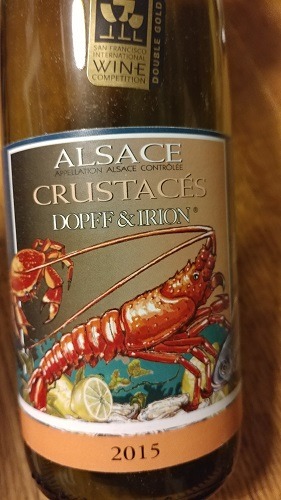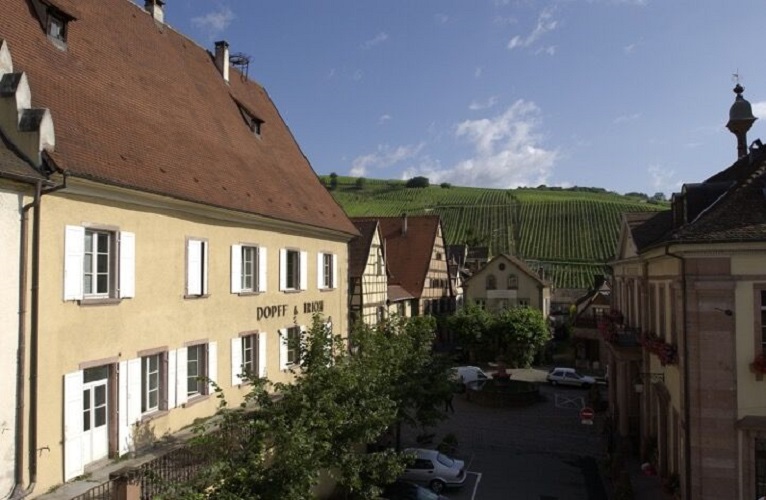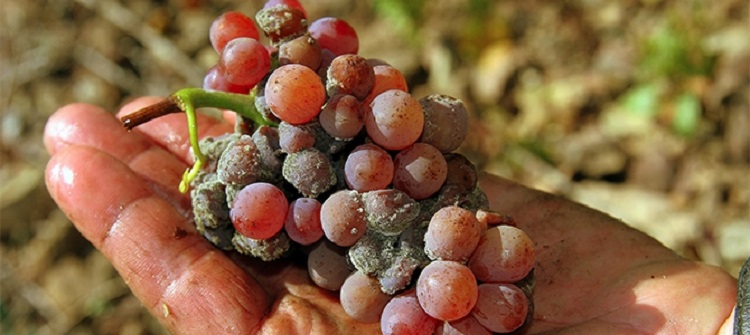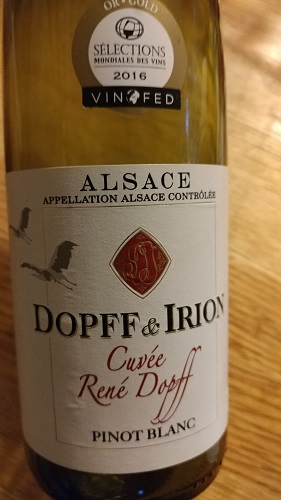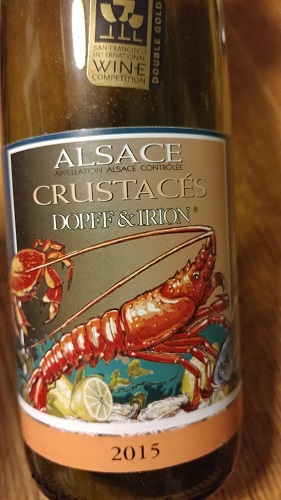Tasting The Alsace Region's Dopff & Irion Wines
Since the Renaissance, winemaking has thrived throughout France's Alsace region, particularly in the village of Riquewihr. Its moniker "Pearl of the Alsace" celebrates a fabled winemaking heritage as well as the village's layout and overall appearance, which hasn't changed since the Middle Ages, and some of the village's finest wines are made by Dopff & Irion.
Founder Rene Dopff joined fortunes with the widowed Madame Irion in 1945 to establish Dopff & Irion. Dopff then took over the historic Château de Riquewihr, built in 1549 and originally owned by the Princes of Württemberg, who ruled over the city and region for five centuries.
Revolutionary at the time, Dopff's winemaking approach focused on terroir rather than specific varietals by dividing the château's 68 vineyard acres into four distinct estates, naming them Les Murailles, Les Sorcières, Les Maquisards, and Les Amandiers. Each estate today focuses on a single grape variety best suited to its micro-terroir made possible due to the differing soil types and climates situated within close proximity to each other.
Soon Dopff supplied wines to high-profile clients like the Palais de l'Elysée, the French president's official residence. Now you too can taste the Alsace's finest starting with these bottles:
Crémant d'Alsace Brut Rosé — Entire clusters of pinot noir grapes are conveyored on a belt to the press, keeping berries intact. The must is kept at low temperatures and matured in a vat for nearly six months before bottling. A blend of sugar and yeasts (liqueur de tirage) is added to provoke a second bottle fermentation. Storing the cremant horizontally on laths 12 to 15 months before disgorging the sweet liqueur eliminates yeast deposits, showcasing its dry elegant style. Like many Champagnes, this cremant isn't derived from any particular vintage, which allows blending from different years to ensure consistent flavor profiles and quality.
Pink in the glass with tinges of orange, a bouquet full of red berry fruit permeates the nose. Restrained fruit sugars make for a more refined tasting experience of even limestone effervescence, yielding a bite of cranberry with complex citrus fruitiness on the palate complemented by sweet strawberry and a creamy mouthfeel. As a refined aperitif or cocktail wine, the ideal serving temperature is between 45 and 46 degrees Fahrenheit, but this wine can be appreciated up to 50 degrees.
Dopff & Irion Cuvée René Dopff Pinot Blanc 2016 – Made from 50 percent pinot blanc and 50 percent pinot Auxerrois, the grapes for this wine are entirely handpicked and gently extracted via low-pressure pressing at controlled temperatures. The wine is matured on fine lees for four months, filtered, and stored in stainless steel vats for several months before bottling.
You get a luminous pure gold hue with crisp, sweet apple and honeydew melon nectar notes. A refreshing mouthfeel, light on the chalkiness and with a well-balanced acidity on the palate, is delivered by fine, light bubbles. Bracing minerality quickly recedes to honey, spicy cardamom-pepper, and citrus fruit for an ebullient finish. Prime pairing opportunities include curry-based dishes, grilled chicken, fish, and goat cheeses.
Dopff & Irion Crustacés 2015 – Produced with handpicked 80 percent silvaner and 20 percent pinot blanc grapes grown in limestone clay soil by Dopff & Irion's 300 selected vine-growers. Immediate pressing and six months of maturation in tanks before bottling ensures freshness throughout the tasting experience.
Pure and crisp on the nose and golden in appearance, the wine has a bright minerality that enlivens the palate with light, spicy fruit balanced with zing and sweetness. Pairing with lobster unlocks the nutty characteristics, enlivening and broadening the flavor profile of this crustacean while still carrying fruity notes into the finish.
